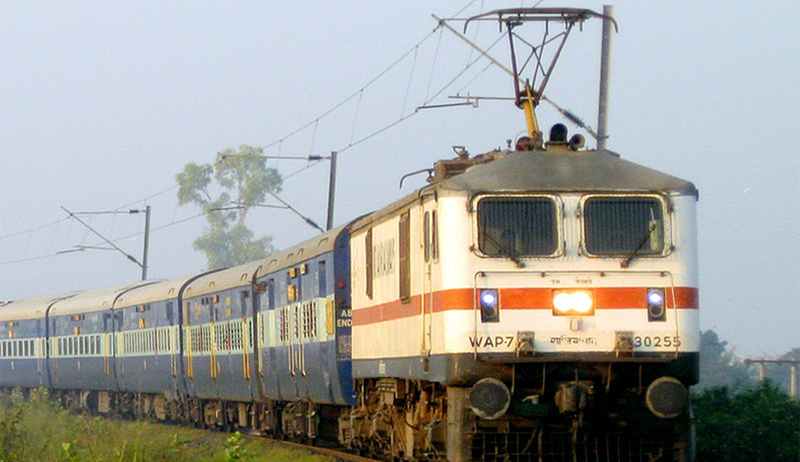Policy Brief
Decarbonising the Indian Railways
Scaling Ambitions, Understanding Ground realities
Aditya Ramji, Shruti Nagbhushan, Kapardhi Bharadwaj
April 2017 | Low-carbon Economy
Suggested Citation: Ramji, Aditya, Shruti Nagbhushan, and Kapardhi Bharadwaj. 2017. Decarbonising the Indian Railways: Scaling Ambitions, Understanding Ground Realities. New Delhi: Council on Energy Environment and Water.
Overview
As India transitions to a low-carbon emissions pathway, the Indian Railways has set an ambitious goal of reduction in emissions. This study identifies key policy and regulatory challenges that developers face while supporting the Railways’ renewable energy push, and provides recommendations for both central and state bodies to facilitate a smooth ecosystem for ensuring developer and investor confidence. It follows up on a policy brief, ‘Greening the Tracks: Achieving the 1 gigawatt solar PV target of the Indian Railways.’
The Railways’ target is to reduce its emissions intensity to 33 per cent from 2005 levels by 2030. This includes focus on improvement of rail traction energy and fuel efficiency of 8- 13 per cent from 2013 levels. In recent years, the Indian Railways has taken significant strides to increase the share of renewable energy in its electricity mix, which includes solar and wind, to reduce energy costs as well as carbon emissions.
The brief was launched at The Council’s ‘National Conference on Decarbonising the Indian Railways’ by Suresh Prabhu, Union Minister for Railways, and Piyush Goyal, Minister of State (IC) for Power, Coal, New and Renewable Energy, and Mines on 5 April 2017 at India Habitat Centre, New Delhi.

Source: Wikimedia Commons
Key Findings
- The Indian Railways are already on track to achieving the 1 GW target. With the same momentum a potential target of 5 GW could be achieved by 2025.
- The Railways could draw up to 25 per cent of its electric power needs from renewables if the 5 GW target is achieved.
- With an estimated 1.1 GW coming from rooftop and 3.9 GW from utility scale projects, this target would require an investment of USD 3.6 billion.
- If this target is achieved, it would take India a step closer towards achieving its 175 GW renewables target by 2022 as well as its INDC commitment of 40 per cent non-fossil fuel installed power capacity.
Indian Railways’ ambitious renewable energy push will not only lower energy bills for the Railways but will also advance India’s climate goals and serve as a role model for low-carbon public transportation across the world.

Piyush Goyal, Minister of State (IC) for Power, Coal, New and Renewable Energy and Mines at the National Conference on Decarbonising the Indian Railways. (Source: CEEW)
Key Recommendations
- Develop technical and regulatory guidelines for renewable integration for traction operations, which would involve agreements between the Railways, State Utilities, and Solar Developers.
- Resolve the issue of clearances for the Railways to operate as a distribution licensee in open access networks to bring down the costs of power procurement.
- Standardise Power Purchase Agreements (PPAs), working jointly with central and state electricity regulators.
- Create a platform for regular engagement with solar developers, to discuss concerns with regards to technical and regulatory requirements.







